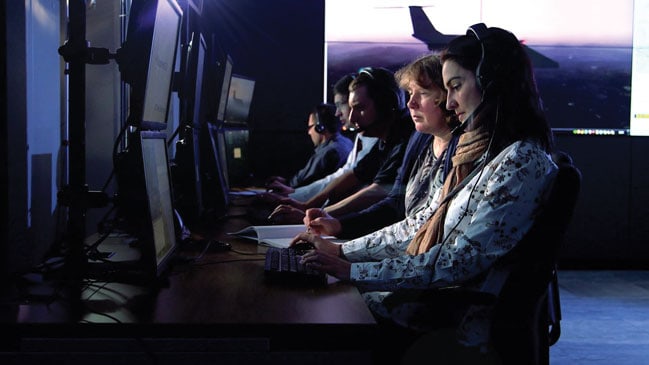The next major step in civil aviation will be the introduction of autonomous systems to undertake roles that are beyond the capability of manned aircraft. The technologies required to achieve this breakthrough will also further enhance the safety and efficiency of today’s manned aircraft. Unmanned aircraft are not constrained by size, endurance and the operating limitations imposed by the need to protect a human on board; they can fly for very long periods and in high-risk environments and can be of any shape or size. They have gained notoriety as military drones but, as common to most aviation advances (jet engine, radar, composites, fly-by-wire, GPS, etc), military developments lead to revolutions in civil aircraft performance and open up new opportunities.
In recent years, we have seen significant developments in military unmanned aircraft but they can only operate over military test ranges and do not have the on-board systems that would allow them to operate in the general airspace of interest to commercial operations. In the UK, commercial operations are limited to small aircraft, generally weighing no more than 5kg, being flown within direct line of sight of the ground pilot, below 400ft altitude and no closer than 50m to people and property. While these limitations are manageable for small-scale agricultural and civil engineering surveying operations or inspection of local hazardous areas, they are too restrictive for many of the potential applications. Google, which recently demonstrated a ‘delivery by drone’ in the Australian outback, has again highlighted the potential utility of unmanned aircraft while bringing into focus the technical and regulatory challenges that yet have to be fully addressed.

Unmanned aircraft will open up new opportunities for transporting, searching, surveying, monitoring and relaying by air. Ultimately there will be no need for any aircraft to be manned. In the near term, long-distance unmanned freight transport using controlled airspace is realisable. Similarly, disaster relief, where risks are outweighed by benefit, could be realised before all the regulations and technical solutions are developed. The greatest challenge will be flight in uncontrolled, congested airspace over heavily populated areas. For this reason, the UK is investing in the ASTRAEA programme to address all the issues associated with the introduction of unmanned aircraft of any size into all categories of airspace anywhere.
ASTRAEA — a collaboration with Airbus Defence and Space, AOS, BAE Systems, Cobham, Qinetiq, Rolls-Royce and Thales — has, since 2006, investigated the technical developments that will have to be addressed to meet the regulator’s need for ‘equivalence’ and ‘transparency’ with manned aircraft operations. Over the last eight years, candidate technologies required to move the pilot from the aircraft to the ground have been identified, evaluated and demonstrated. These solutions include sensor systems to replicate the pilot’s ‘see and avoid’ responsibilities, secure and reliable command and control communications systems to connect the ground pilot and the aircraft and air traffic controllers and on-board intelligence to ensure that the aircraft will follow the rules of the air in the event of a lost communication link to the pilot or other contingencies.
’Although the delivery of takeaways or books in crowded urban areas will be challenging for regulators, a hub-to-hub concept may be more realistic in the near term, such as the delivery of transplant organs or blood supplies between hospitals
The programme has undertaken a full survey of all the changes necessary to ‘un-man’ an aircraft through a virtual certification process in conjunction with the UK Civil Aviation Authority. It has also undertaken systems simulation and ground-based and airborne trials of subsystems, including: detect and avoid, the equivalent of the function the pilot of a manned aircraft undertakes to avoid other air traffic, the ground, obstacles and dangerous weather; secure communication networks — innovation is needed to ensure the integrity and security of the command, control and communications link between the human and machine is maintained; decision-making systems; power management; and air-to-air refuelling systems.
The uses for small unmanned aircraft will expand rapidly and particularly when their operating range can be extended. Although the delivery of takeaways or books in crowded urban areas will be challenging for regulators, a hub-to-hub concept may be more realistic in the near term, such as the delivery of transplant organs or blood supplies between hospitals.
Unmanned craft will become ubiquitous. This year will see further rapid growth in the applications for small aircraft and a maturing of the technologies and inevitable legislation. ASTRAEA will be a significant contributor to the next major step in aviation.
Lambert Dopping-Hepenstal is ASTRAEA programme director and engineering director of systems and strategy at BAE Systems Military Air & Information










UK Enters ‘Golden Age of Nuclear’
The delay (nearly 8 years) in getting approval for the Rolls-Royce SMR is most worrying. Signifies a torpid and expensive system that is quite onerous...